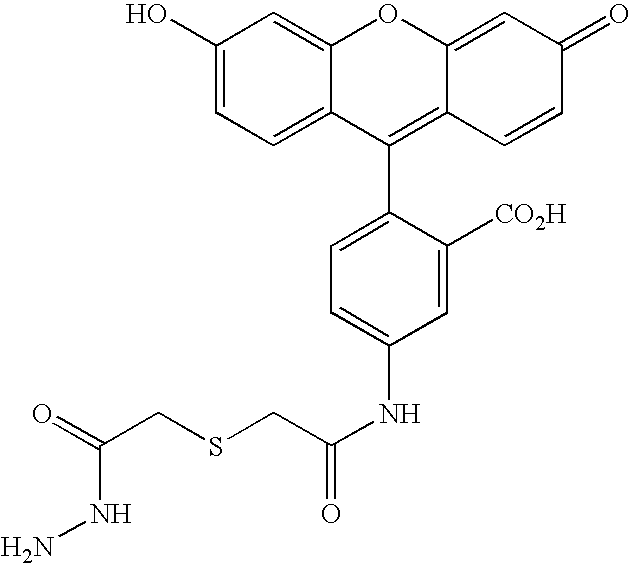Methods and compositions for peptide and protein labeling
- Summary
- Abstract
- Description
- Claims
- Application Information
AI Technical Summary
Benefits of technology
Problems solved by technology
Method used
Image
Examples
examples
Introduction
[0169] Many natural enzymes have evolved marked substrate specificity to fulfill their biological functions. One example is E. coli enzyme biotin ligase (i.e., BirA) which participates in the transfer of CO2 from bicarbonate to organic acids to form various cellular metabolite. (Chapman-Smith et al. J. Nutr. 129:477S-484S, 1999.) It has only one natural substrate in bacteria, the biotin carboxyl carrier protein (BCCP), which it biotinylates at lysine 122 to prepare it for carboxylation by bicarbonate. Schatz et al. used peptide panning to identify a minimal, 13-amino acid peptide sequence that could be recognized and enzymatically biotinylated by BirA, LNDIFEAQKIEWH (SEQ ID NO:4), where the biotinylated lysine is underlined. (Schatz et al. Biotechnology 11:1138-1143, 1993; Beckett et al. Protein Sci. 8:921-929, 1999.) Purified BirA and cloning vectors for introducing this modification sequence, called “Avi-Tag™” onto proteins of interest for site-specific biotinylation...
PUM
| Property | Measurement | Unit |
|---|---|---|
| Molar density | aaaaa | aaaaa |
| Molar density | aaaaa | aaaaa |
| Inhibition | aaaaa | aaaaa |
Abstract
Description
Claims
Application Information
 Login to View More
Login to View More - R&D
- Intellectual Property
- Life Sciences
- Materials
- Tech Scout
- Unparalleled Data Quality
- Higher Quality Content
- 60% Fewer Hallucinations
Browse by: Latest US Patents, China's latest patents, Technical Efficacy Thesaurus, Application Domain, Technology Topic, Popular Technical Reports.
© 2025 PatSnap. All rights reserved.Legal|Privacy policy|Modern Slavery Act Transparency Statement|Sitemap|About US| Contact US: help@patsnap.com



